Nature’s Palette: The Astonishing Spectrum of Animal Blood Colors
By Helen Wong 王思齊
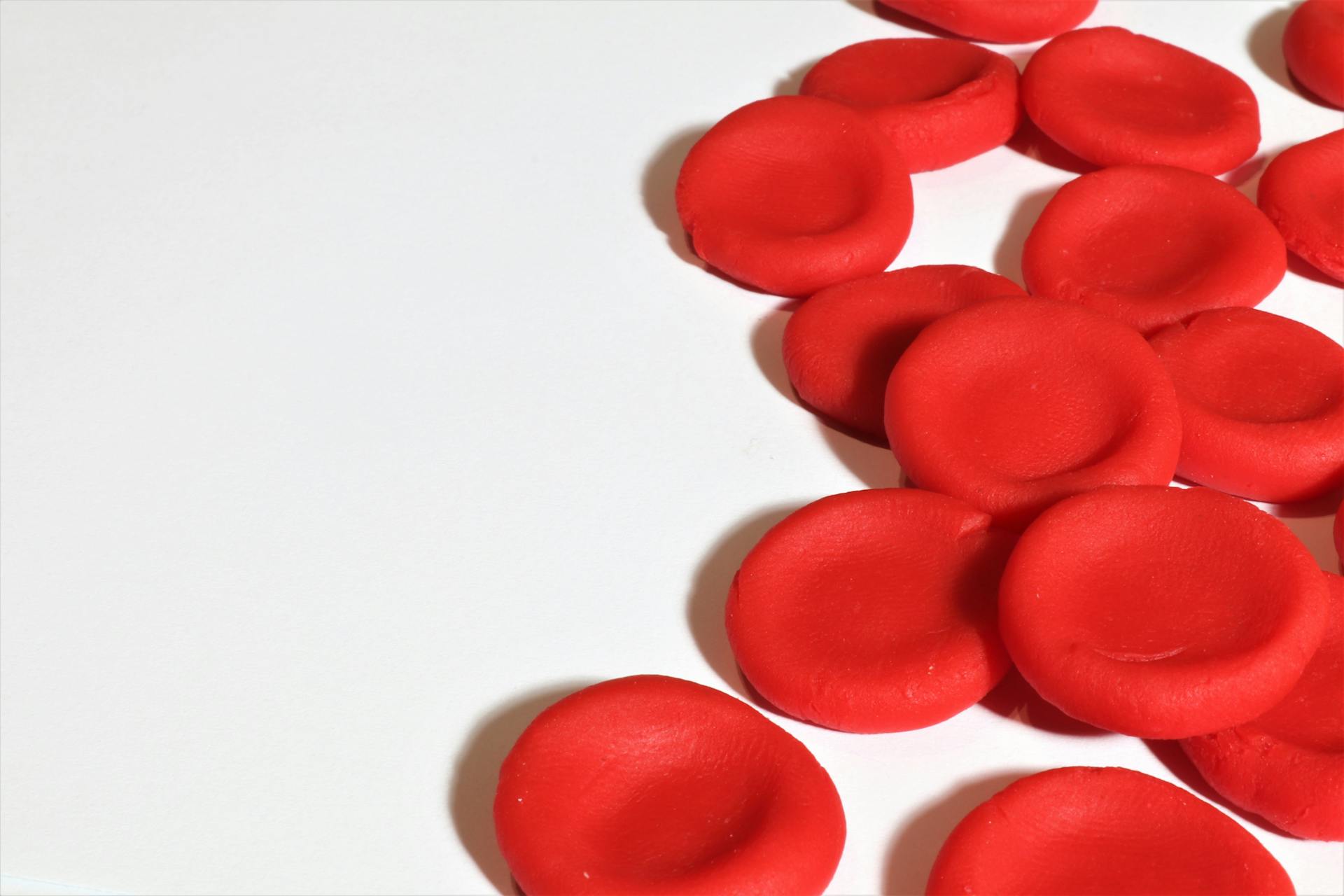
What is the color of blood?
While the instinctive response for many of us may be “red,” the truth is that nature’s artistry extends far beyond our imagination. Let’s delve into the astonishing world of blood's vibrant hues – where blues, purples, greens, and even the absence of color thrive [1, 2].
Determinant of Blood Color: Respiratory Pigment
The key to this breathtaking diversity of animal blood colors lies in the type(s) of respiratory pigment in our blood. Respiratory pigments are metal-containing proteins that help transport respiratory gasses such as oxygen and carbon dioxide (footnote 1). The well-known hemoglobin in our blood is just one example of such a pigment, along with lesser-known ones like chlorocruorin, hemocyanin, and hemerythrin. These pigments differ in their chemical structures and use different metal complexes to bind oxygen molecules. Together, these subtle variations cause each pigment to absorb and reflect unique wavelengths of light, resulting in a vast array of blood colors.
Be careful: When we talk about blood color, we are referring to the color of the oxygenated pigments rather than the deoxygenated ones. When oxygen binds to the metals within these pigments, it alters the three-dimensional structures of the whole pigments and, in some cases, changes the oxidation states of the metals [2]. This, in turn, results in a shift in their light absorption and reflection spectra, changing the blood colors we see.
Blue Blood
In certain invertebrates such as squid, octopus, lobster, and horseshoe crab, the presence of the respiratory pigment hemocyanin gives their blood a distinct blue color [2]. Unlike hemoglobin, which utilizes iron (Fe2+) to bind oxygen, hemocyanin relies on copper (Cu2+) for oxygen transportation in these marine animals. The copper (II) ion strongly absorbs red light while reflecting blue light, resulting in the characteristic blue appearance of their blood.
These blue-blooded invertebrates have evolved to use hemocyanin for two reasons [3]. Firstly, the effectiveness of hemoglobin to transport oxygen decreases at low temperatures, such that hemocyanin outperforms hemoglobin in the deep sea. Secondly, hemoglobin exhibits superior efficiency in binding oxygen compared to hemocyanin but only in oxygen-rich environments, because the binding of every new oxygen molecule can facilitate that of the next oxygen molecule, until the four vacancies in the hemoglobin are taken up. However, in oxygen-deprived settings, hemoglobin’s oxygen-binding efficiency diminishes, and hemocyanin proves to be more effective. Hence, the switch to hemocyanin gives these marine animals an edge in obtaining oxygen in the ocean.
Purple Blood
Blood naturally takes on a purple color in lamp shells and certain marine worms [1, 2]. These marine invertebrates use neither hemoglobin nor hemocyanin, but hemerythrin. While hemerythrin, like hemoglobin, uses iron as the oxygen-binding material, it gives a violet-pink color instead of bright red in its oxygenated state, and is colorless when no oxygen is bound.
Green Blood
For some earthworms and leeches, green blood is the norm [1, 2]. These invertebrates contain chlorocruorin, another iron-based pigment that makes their blood look green. While chlorocruorin is typically linked to green hues, its color is concentration-dependent – lower amounts appear green, but higher concentrations cause the pigment to take on red coloration.
At the molecular level, chlorocruorin closely resembles hemoglobin. In fact, its chemical composition diverges from hemoglobin in just one respect: Chlorocruorin contains an aldehyde group (−CHO) whereas hemoglobin has a vinyl group (−CH=CH2). Nevertheless, it is worth noting that chlorocruorin does not contain chlorine as its name may otherwise suggest.
Here comes an interesting twist: Green blood does not solely rely on the presence of chlorocruorin. Like most vertebrates, green-blooded skinksfrom New Guinea use hemoglobin to carry oxygen. However, their blood and tissues are green [4]. This peculiar phenomenon is related to how these lizards recycle hemoglobin. In humans, the recycling of hemoglobin involves two steps, first by breaking the pigment down into a green chemical named biliverdin, then by converting biliverdin to a yellow compound called bilirubin. However, the lizards lack the ability to further metabolize biliverdin, leading to an accumulation of the green pigment in their blood [1, 2]. The color is so intense that it overshadows the natural red color of hemoglobin.
Colorless Blood
Perhaps the strangest “blood color” is having no color at all. The Antarctic icefishes stand out as one of the most unusual vertebrates as they lack any respiratory pigment [2, 3]. As a result, icefish blood is colorless with only blood plasma. Despite the absence of hemoglobin, scientists have discovered remnants of hemoglobin genes in icefish genomes, suggesting that these genes were lost during the course of evolution [5].
But the question remains: How do these Antarctic fishes survive without such an important oxygen carrier? Icefishes have developed several adaptations to compensate for that [2]. They have a larger blood volume than related fish species, and lead a relatively sedentary lifestyle, which helps reduce their oxygen demands. On the other hand, the cold water of the Southern Atlantic also promote icefish survival by maintaining higher concentrations of dissolved oxygen than warmer seas.
Conclusion
Now back to the same question: What is the color of blood?
This time, you might be tempted to respond with a range of colors we have covered – red, blue, purple, green, and even colorless – and they are all right! For other creative answers that you may think of, why not? Scientific knowledge is tentative and subject to change when new evidence appears – so who knows, perhaps there are yet undiscovered ones waiting to join the ever-growing palette of blood colors!
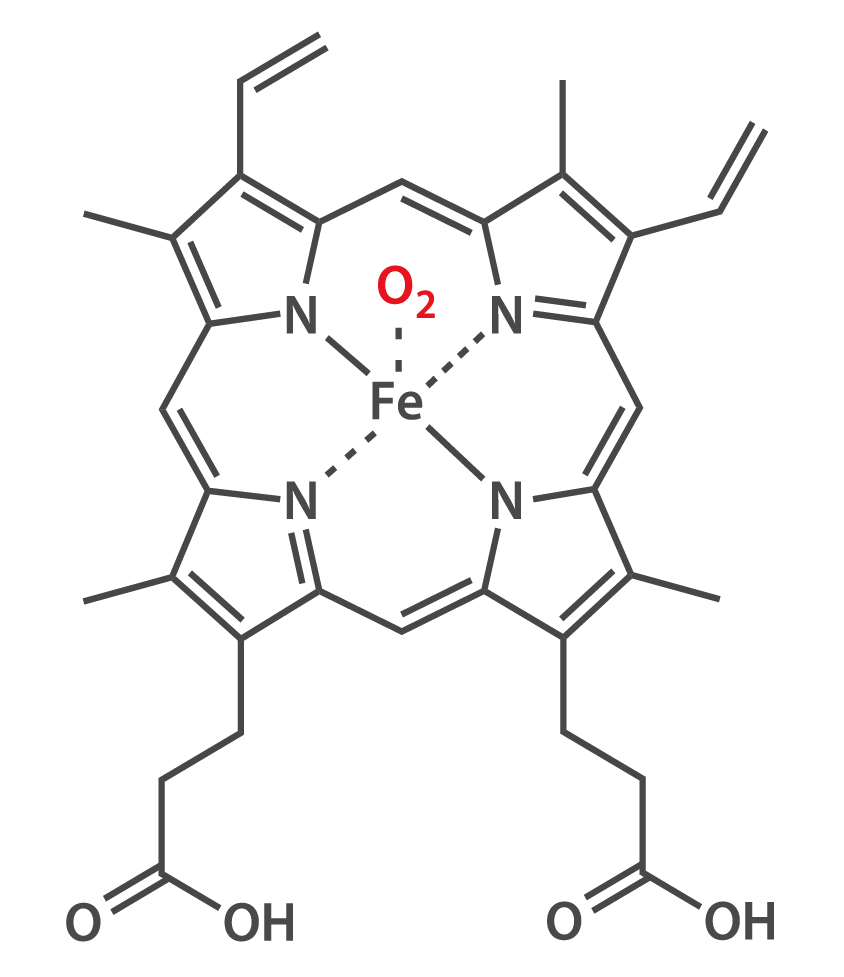 |
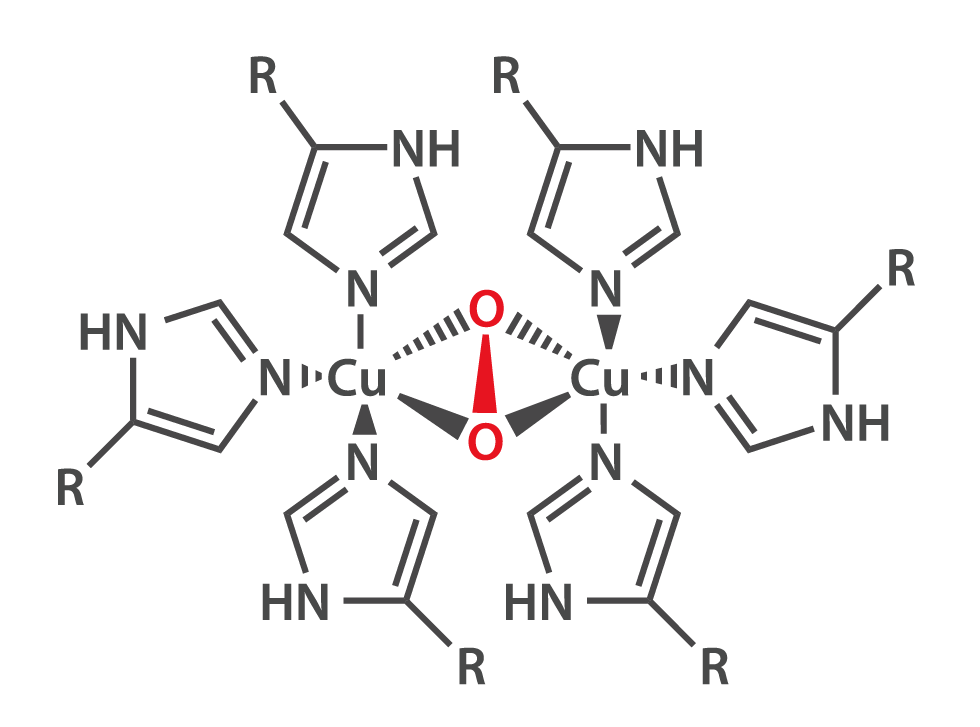 |
| Hemoglobin (Heme B) | Hemocyanin |
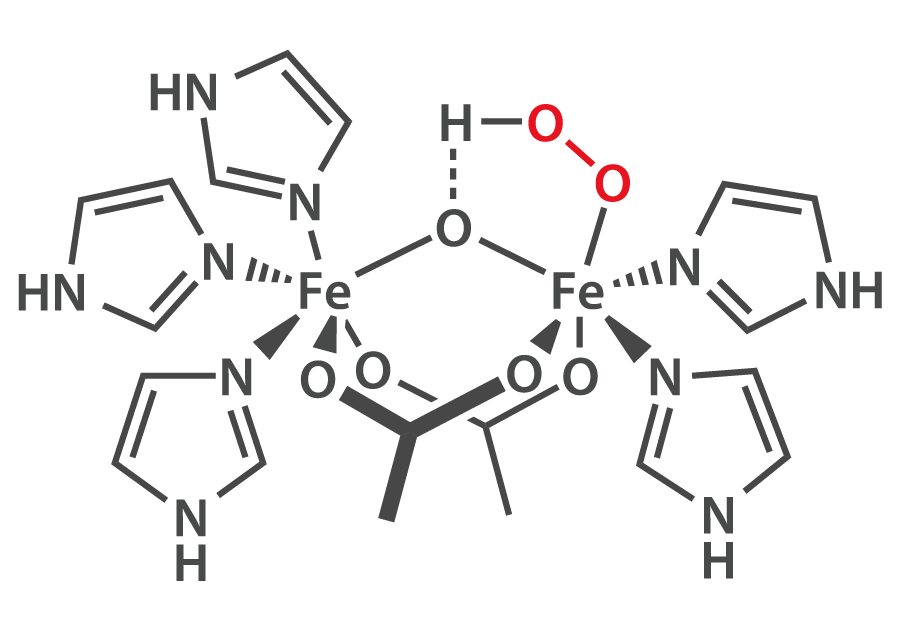 |
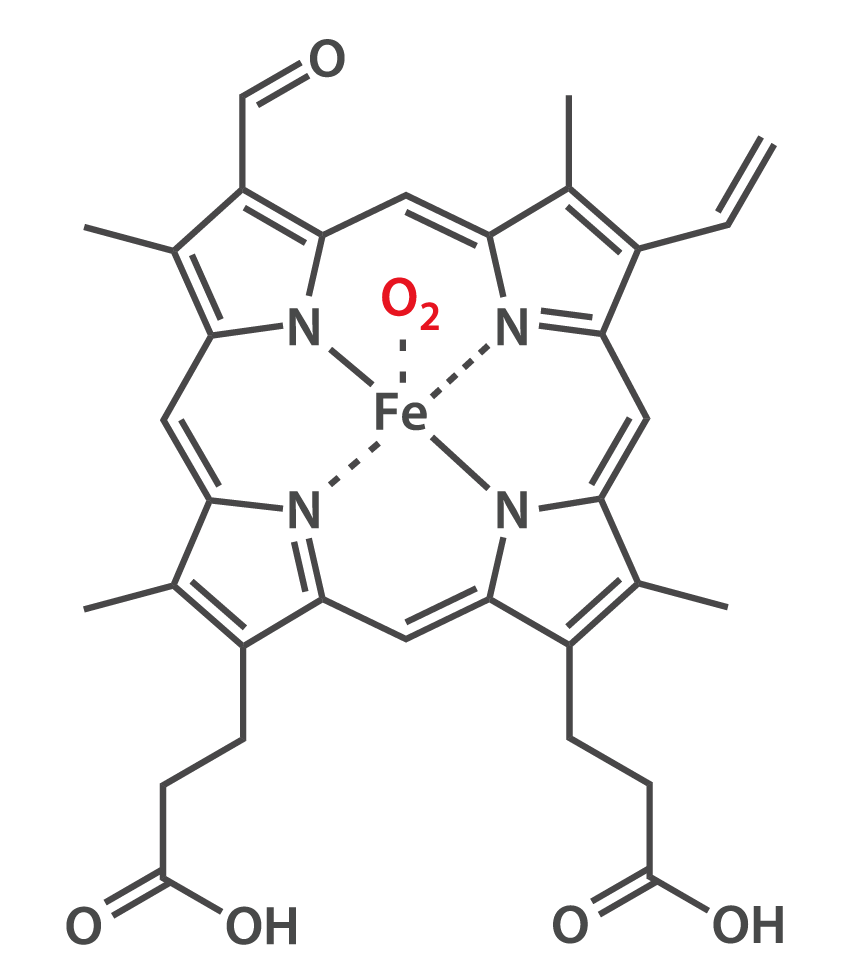 |
| Hemerythrin | Chlorocruorin |
1 Editor’s note: While most of the carbon dioxide is transported through blood plasma in the form of bicarbonate ions in humans (as mentioned in high school textbooks), 10% of the gas is actually carried by hemoglobin [6].
References
[1] Brunning, A. (2014, October 28). The Chemistry of the Colours of Blood. Compound Interest. https://www.compoundchem.com/2014/10/28/coloursofblood/
[2] Lutz, D. (2010, February). The Many Colors of Blood. ChemMatters. Retrieved from https://teachchemistry.org/chemmatters/february-2010/the-many-colors-of-blood
[3] Rennie, J. (2019, April 22). Icefish Study Adds Another Color to the Story of Blood. Quanta Magazine. https://www.quantamagazine.org/icefish-study-adds-another-color-to-the-story-of-blood-20190422/
[4] Rodriguez, Z. B., Perkins, S. L., & Austin, C. C. (2018). Multiple origins of green blood in New Guinea lizards. Science Advances, 4(5). https://doi.org/10.1126/sciadv.aao5017
[5] Cocca, E., Ratnayake-Lecamwasam, M., Parker, S. K., Camardella, L., Ciaramella, M., di Prisco, G., & Detrich, H. W. (1997). Do the hemoglobinless icefishes have globin genes? Comparative Biochemistry and Physiology Part A: Physiology, 118(4), 1027–1030. https://doi.org/10.1016/s0300-9629(97)00010-8
[6] Doyle, J., & Cooper, J. S. (2023, July 4). Physiology, Carbon Dioxide Transport. In: StatPearls. https://www.ncbi.nlm.nih.gov/books/NBK532988/